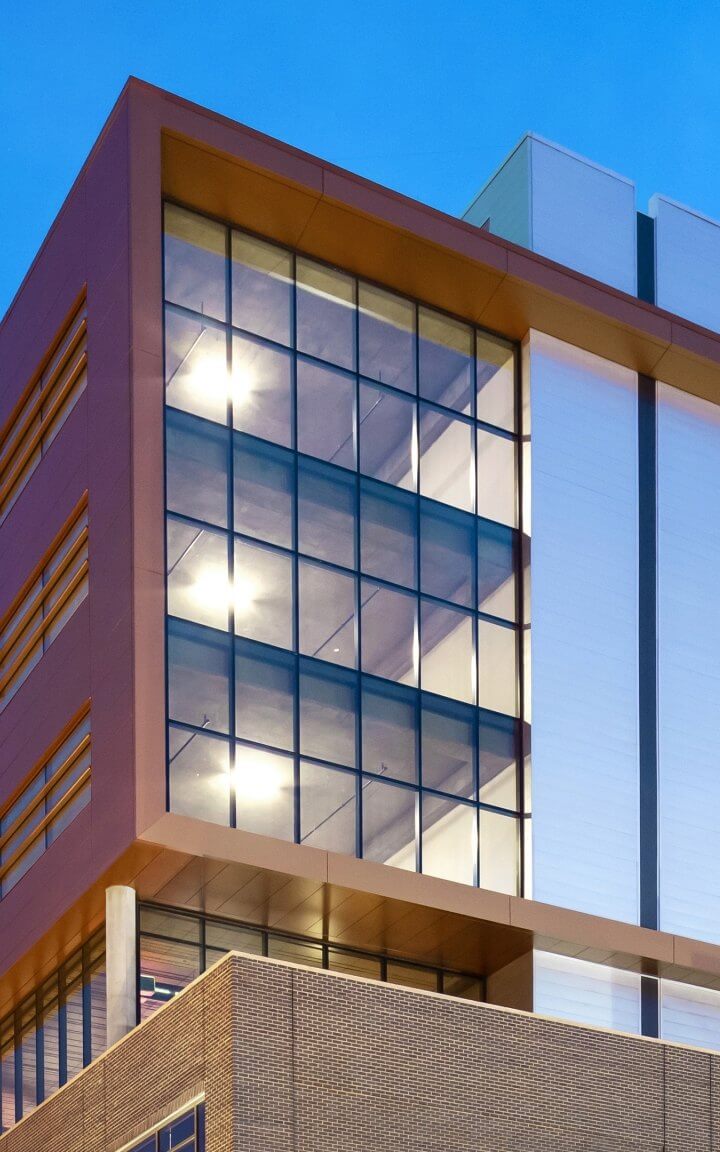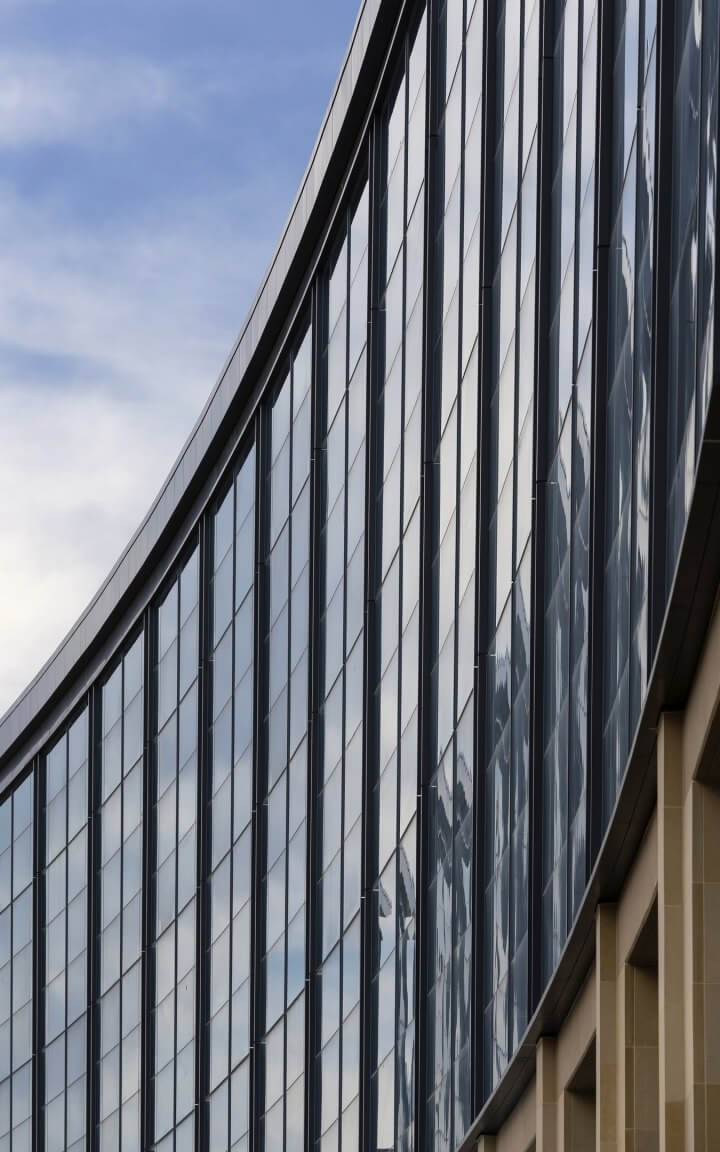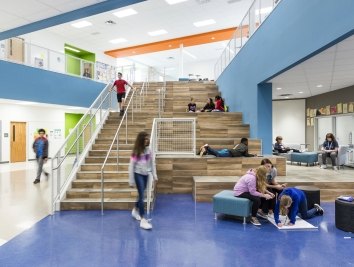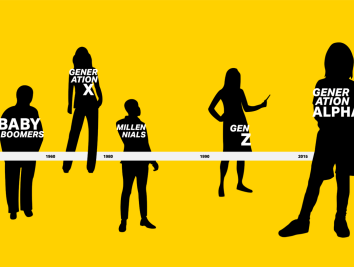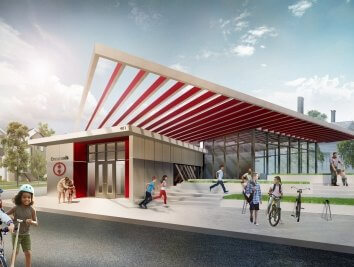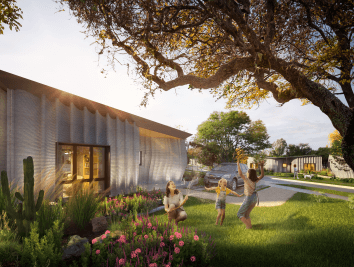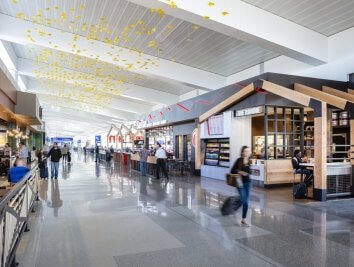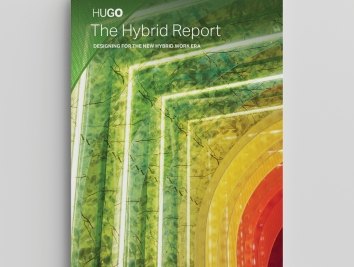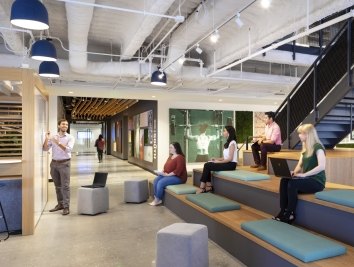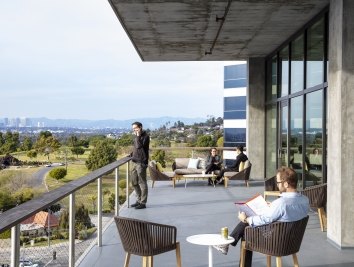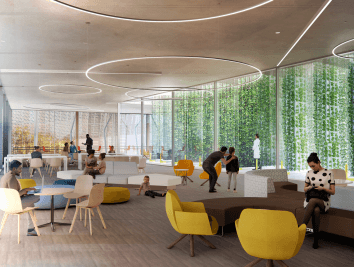Designing with Empathy
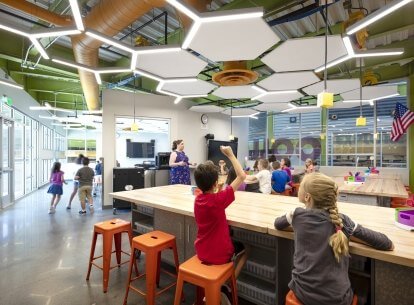
Considering the diversity, complexity, and pervasiveness of stress in schools and its impact on learning and health, it is essential for school facilities to provide holistic support for students and teachers. Learning environments need to be more than just a space to learn— they need to be restorative spaces that provide a sense of safety and security, respond to individual student's needs, and facilitate counseling and mentoring by staff and mental health professionals. By understanding the struggles and stressors students and staff might be carrying with them into the classroom, it is possible to implement design strategies that put health and wellness first, starting at the very beginning of the visioning and design process.
Integrating wellness-focused insights from research in education and the behavioral and brain sciences and mapping meaningful connections between research-based principles to designing learning spaces can help us support mental and emotional health in educational facilities. Adopting a holistic perspective on education and design supports the well-being and success of the whole student on three levels: the quality of their sensory environment, the richness of their social and emotional environment, and the opportunities they have for self-development.
Sensory Environment
Research that has evaluated the impact of the physical classroom environment on students’ academic progress (Barrett et al, 2015) and the extensive benefits of engaging with nature present compelling evidence that the quality of our environment has a direct impact on important outcomes for our health, wellbeing, and cognitive performance. The learning environment's sensory qualities can be designed to influence students’ physiological and psychological state and their ability to learn effectively. Ample natural light, good air quality, thermal comfort, favorable sound conditions, opportunities for movement, and restorative qualities in the environment are essential design features that can be incorporated to promote health, well-being, and cognitive performance (Uncapher, 2016).
Even when structural changes to learning spaces are not possible, being mindful about individualization and stimulation factors in classroom design can still be achievable. Integrating elements of nature through color, materials, and classroom decorations can imbue some of the benefits of nature into the learning environment. By integrating nature and patterns from nature into the design of our built environment, we can infuse the health, well-being, and performance benefits that nature provides into the spaces we inhabit (Terrapin Bright Green). Balancing complexity and color and fostering a sense of identity and ownership in the classroom through flexible and varied furniture arrangements and student work display can help students feel at home in their space (Barrett et al, 2015).
Corgan designed the first ground-up C-STEM (computer, science, technology, engineering, and math) school in Arizona, Dove Mountain CSTEM K-8 School. Corgan devised a plan to create a campus that departs from traditional classroom typologies to connect often siloed programs and learning and create fluid, seamless experiences that encourages collaboration and inspires new interests. All classrooms are uniform in design and natural light, having equal access to age-appropriate outdoor learning areas. While projects are born in the classroom, they can be further explored in outdoor learning areas, allowing students to gather information, think critically, make decisions, and take action within their C-STEM learning. Students are met with vibrant color, texture, and daylight throughout the campus that energize the learning environment and enrich their daily lives—marrying the science and beauty of good design.
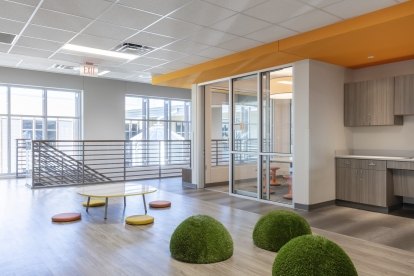
Social and Emotional Environment
Supporting students’ social and emotional development through learning spaces that foster collaboration and mentorship represent an important step toward realizing a holistic approach to learning. Ensuring a solid alignment with students' developmental stage by facilitating an appropriate level of autonomy, peer interaction, mentorship opportunities with older and younger peers, and support and oversight from teachers and faculty in collaboration spaces, shared spaces, and in-between spaces are essential for student engagement and wellbeing (Carolan et al, 2015). The harmonious balance between visibility and seclusion, focus and stimulation, and flexibility and sense of place must be considered for each group of students so that their learning space aligns with their unique needs for interaction and connection. Creating strong connections to nature and natural elements can be an impactful tool for supporting mental and emotional well-being. A recent study found that the feeling of calm contentment that we get when we interact with nature, specifically in areas with an abundance of trees, means that our psychological needs for autonomy, relatedness, and competence are being met (Neuroscience News; Landon et al, 2020). This feeling of well-being is linked to stronger feelings of place attachment- a sense of connection that is important for social and emotional well-being (Neuroscience News; Landon et al, 2020).
Corgan designed Canyon Ranch Elementary School to enable a “house” learning concept that includes seven houses, each one made up of learners from each grade level, K-5. Placing students of different ages and growth levels together allows more advanced learners to develop leadership and empathy skills and for younger learners to find mentorship that pushes them forward. This concept allows for team teaching, greater collaboration, and cross-pollination between subject matters and grade levels for facilitators. This school was designed with the creative learner in mind, allowing learners to lounge on a reading bench, traverse through the interior courtyard with a quick game of hopscotch, step off into a marker wall nook to brainstorm an idea, or pop into a reading tunnel while circulating through the library. This school is one large teaching tool; learning and creativity are never more than a few feet away.
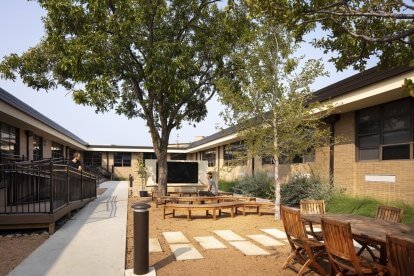
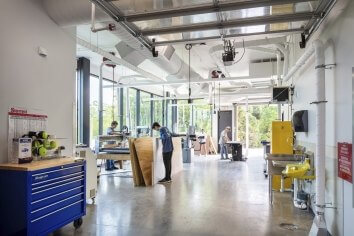
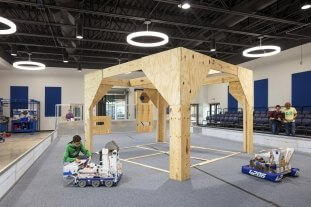
Self-Development
As students progress through their education, exploration and reflection opportunities in the learning environment contribute to identity formation and self-efficacy development (Astin, 1999; Magolda, 2008). Integrating student-led learning opportunities and a developmentally appropriate level of autonomy can help students understand how they like to learn and what interests them (Posey, 2021). Students who are empowered to guide their own learning, solve problems creatively, and approach their education with an inquisitive spirit can benefit from the learning opportunities presented in STEAM-focused laboratories and makerspaces or specialized career development programs taught in high-fidelity learning environments, such as nursing programs, the arts, and more (Peters-Burton et al, 2019).
Intending to expand the learning experience, Corgan designed a natatorium and an IDEA center for Nolan Catholic High School, providing experiential learning opportunities in arts and sciences for all students. The IDEA building provides collaborative intersections for robotics, art, digital media, and video production programs while acting as a community hub for the campus and diocese. Transparency and flexibility permeate the design. A series of overhead doors allow for a continuous project flow from the outdoor work area, the maker spaces, and the lobby and robot arena where the community can see student innovation in action. Spacious engineering labs allow for both individual workstations and collaborative zones with direct views into the maker spaces. Digital media classrooms, separated by an operable wall, create a bridge between the video production studio and traditional art classroom, emphasizing the connectedness between digital and hands-on creation.
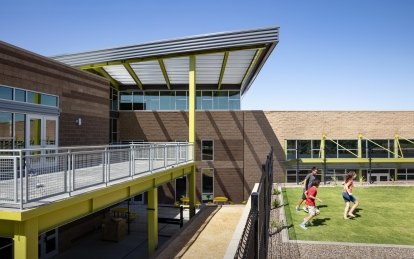
The thoughtful design of learning environments can help to support mental and emotional well-being. When we design with empathy, we think about individual students' needs and how the environment can provide support for everyone. To respond to the growing sources of stress that students face, we need to create space for restoration and relaxation in a society that glamorizes stress and burnout. The design should be focused on promoting health, well-being, and success and should work to care for the whole person by instilling a sense of community, safety, security, and access to support and resources. It should seek to nurture and bring fulfillment to students as they develop through their education so that young minds can grow to reach their full potential.
This is part three of a three-part series, where we dive into how the physical school building is causing stress for students and faculty, research-informed wellness-focused design strategies, and how to design educational buildings with empathy. Explore part 2 and part 3.
Episode 55: Neurodiversity
As wellness, inclusivity, and kindness find their crescendo in national workplace conversations—Gen Z and future talent prioritizing commitments to equity and inclusion and employers celebrating the value of diverse voices and perspectives, office design has both the opportunity and challenge to respond to not only the different ways we work, think, and learn but also the differences in how we experience and perceive our environments. Responding to the diversity of human brains, or neurodiversity, provides insight into how elements of the built environment including privacy, lighting, acoustics, and textures can impact our experience and productivity. From autism and ADHD to dyslexia, variations in neurocognitive functioning can profoundly shape how we see and experience spaces. Listen in as Sean Kim, Interiors Studio Leader, explores the demand for an expanded notion of inclusivity and value of neurodiversity in the workplace, what we can learn from education spaces, and how design can create a more human, empathetic workplace for everyone.
